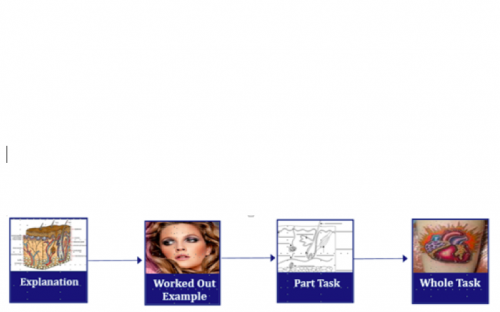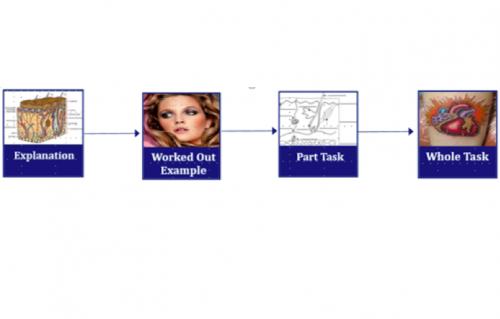Example:
Regular lesson about the skin (biology)
After the explanation (in this case about layers of the skin) the teacher gives a detailed example (i.c. about effects of skin care products).
This is followed by subtasks and students finally get to work with a whole task (i.e how deep must you prick) so that the tattoo remains visible forever?

